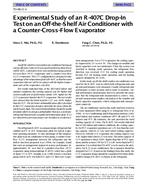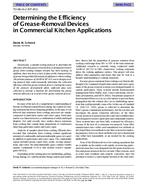-
-
Available Formats
- Options
- Availability
- Priced From ( in USD )
-
Available Formats
-
- Immediate download
-
$16.00Members pay $12.00
- Add to Cart
Customers Who Bought This Also Bought
-

TO-98-11-3 -- Experimental Study of an R-407C Drop-In Tes...
Priced From $16.00 -

TO-98-12-2 -- A Baseline Model for Utility Bill Analysis ...
Priced From $16.00 -

TO-98-14-2 (RP-851) -- Determining the Efficiency of Grea...
Priced From $16.00 -

TO-98-18-3 -- Experimental and Analytical Evaluation of a...
Priced From $16.00
About This Item
Full Description
- Displacement air distribution allows for better indoor air quality in the breathing zone at the same outdoor air supply airflow rate due to contaminant stratification along the room height.
- The increase in outdoor air supply during the peak hours in Miami and Albuquerque results in an increase of both heating and cooling energy consumption. In other climates, the increase in outdoor air supply results in reduced cooling energy consumption.
- For the Phoenix, Minneapolis, and Seattle locations, the HVAC system operation with a variable outdoor air supply allows for a decrease in cooling consumption up to 50% and, in some cases, eliminates the use of refrigeration machines.
- The effect of temperature stratification on HVAC system parameters is the same for all locations; displacement ventilation systems result in decreased cooling energy consumption but increased heating consumption.





